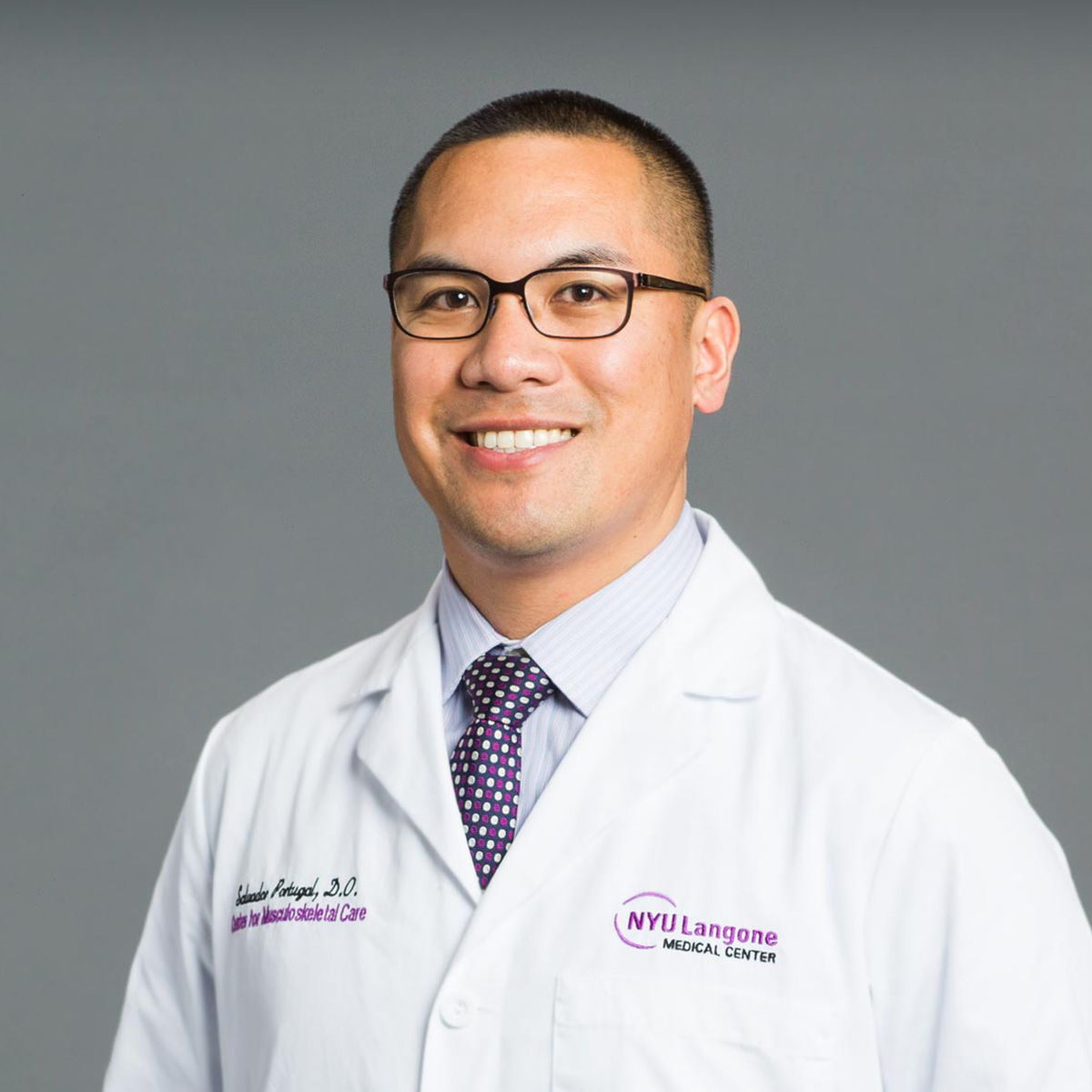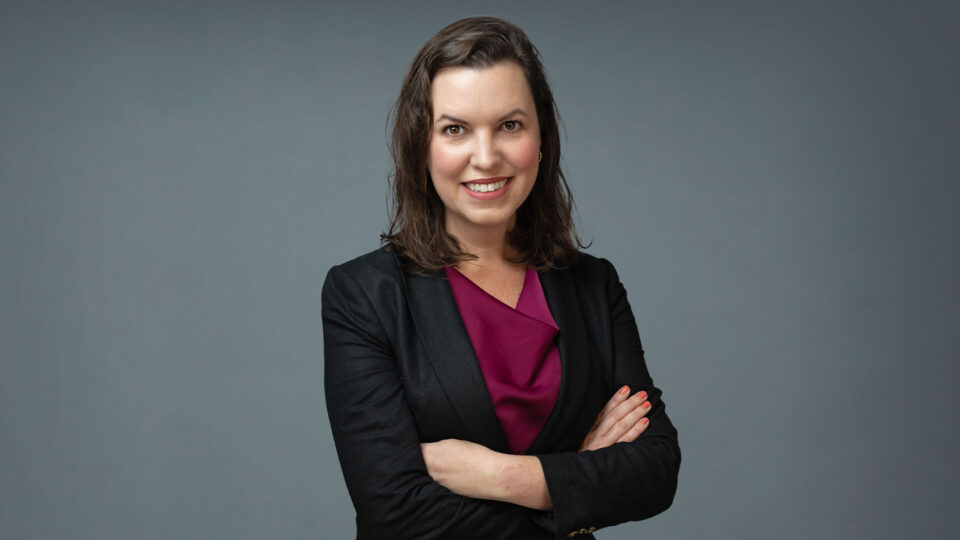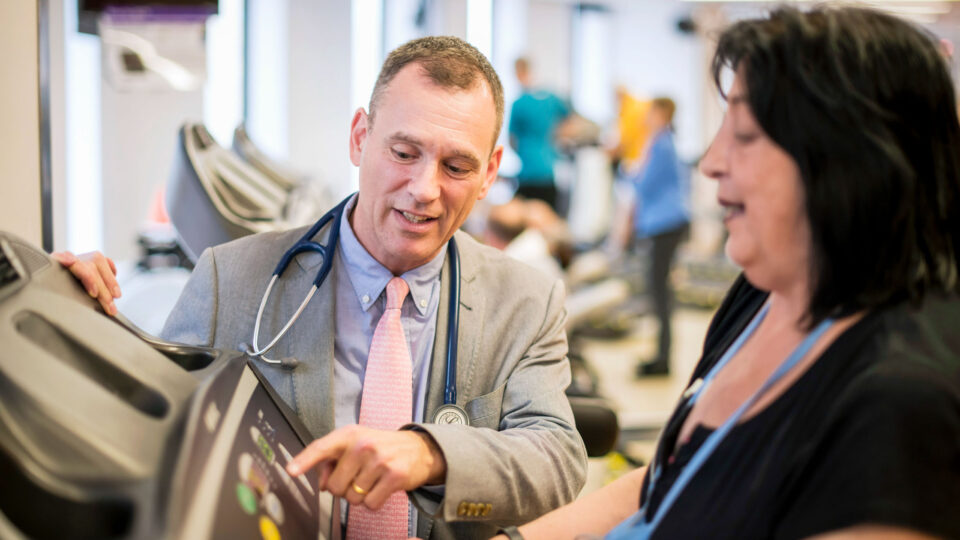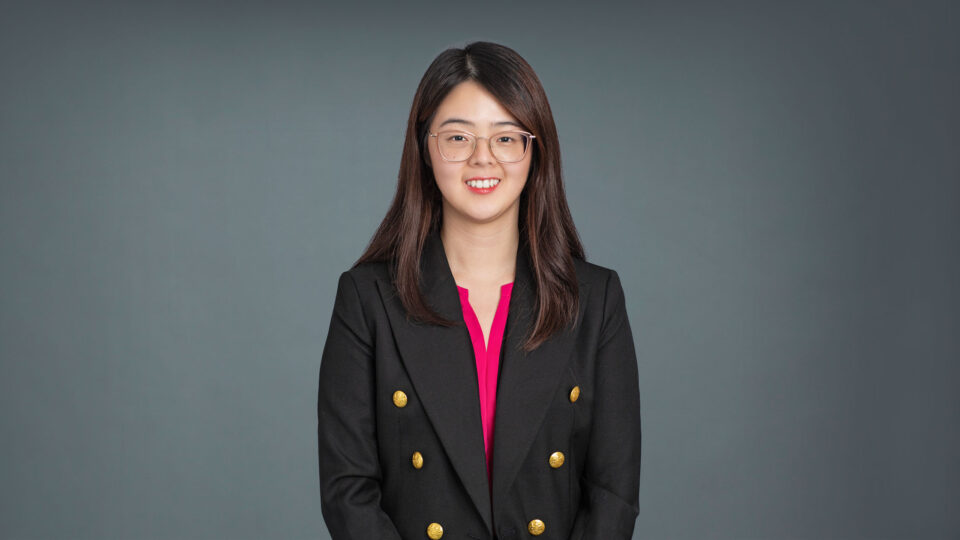Every year, hundreds of physicians take the board exam for the Certificate of Added Qualification in Sports Medicine (CAQSM). Yet resources to help them prepare for the test have long been scarce. Rusk Rehabilitation at NYU Langone Health is helping to fill that gap with a webinar series titled The New Metro: Sports Medicine Board Review Course.
Launched in 2021 by Salvador E. Portugal, DO, MBA, medical director of Rusk’s sports rehabilitation program, and colleagues, the online offering is one of just a handful of CAQSM board review courses in the United States—and the only one that features presentations by leading experts from multiple academic institutions. Initially conducted only in real time, the course recently added an on-demand component so that participants across the country can access lecture content whenever they choose.
Here, Dr. Portugal discusses The New Metro’s unique approach, and how it was influenced by his own experience as an athlete and a clinician.
Physician Focus: Dr. Portugal, please give us an overview of Rusk Rehabilitation’s sports medicine board review course. To begin with, what does it cover, and how is it structured?
Dr. Portugal: The New Metro is a three-day course, held live online each June, that succinctly reviews high-yield board exam topics for the CAQSM. It features 18 hours of lecture content, delivered by some of the brightest sports medicine experts from institutions across metropolitan New York and beyond. Current primary care and PM&R [physical medicine and rehabilitation] sports medicine fellows are invited to attend, as are recertifying sports medicine physicians who plan to take the annual exam.
“The New Metro features 18 hours of lecture content, delivered by some of the brightest sports medicine experts.”
Salvador E. Portugal, DO, MBA
The content is based on a blueprint provided by the American Board of Family Medicine, which administers the exam, and the goal is to prepare participants for everything the test might throw at them.
By the end, clinicians should be able to describe diagnostic protocols, treatment options, and return-to-activity guidelines for sport-related conditions and injuries; the management of a wide range of medical emergencies; the indications for use and mechanism of action of therapeutic drugs; and the impacts of performance-enhancing substances and drugs of abuse. They’ll be ready to answer questions about sport-specific joint kinematics and risk factors for injury, as well as the responsibilities of a team physician.
Physician Focus: This course is unique not only in its subject matter but in its multi-institutional roster of instructors. What led you to design it that way?
Dr. Portugal: In 2021, I was talking with Surein Theivakumar, DO—who at the time was one of my sports medicine fellows—about ways our program could collaborate with other sports medicine programs throughout New York City. It struck us that there were very few options nationwide for sports medicine board review courses, and that a collaborative course would provide the widest range of expertise and professional perspectives.
“It struck us that there were very few options for sports medicine board review courses, and that a collaborative course would provide the widest range of expertise and professional perspectives.”
Initially, we ran The New Metro entirely as live webinars. But last year, we added on-demand access to the lectures and PowerPoint materials. The obvious benefit is that it allows participants to study on their own schedule. Another advantage is that they can pause the videos. It can be challenging to absorb so much content all at once. This way, if there’s a topic people want to pay extra attention to, they can stop, look up more information, and replay the segment as often as necessary.
[Recordings from this year’s course can be accessed online until November 30.]
Physician Focus: How do you choose your lecturers?
Dr. Portugal: We rely on our extensive professional network of physician educators, and on the recommendations from program directors of participating fellowship programs from within the New York City region.
Our speakers have included Lauren E. Borowski, MD, assistant professor of orthopedic surgery at NYU Langone and head team physician of U.S. Men’s Ski Jumping; Dean W. Padavan, MD, clinical assistant professor of medicine at Thomas Jefferson University, associate program director of the Atlantic Sports Health primary care sports medicine fellowship, and associate internist for the New York Jets; and Russell F. Camhi, DO, a primary care sports medicine physician with Northwell Health Orthopedic Institute and the head team physician for Hofstra University.
We also offer lectures and Q&A sessions led by the course directors, who include myself and several Rusk Rehabilitation colleagues: Dr. Theivakumar, clinical assistant professor of rehabilitation medicine and associate director of the PM&R residency program; Julia L. Iafrate, DO, clinical assistant professor of orthopedic surgery and rehabilitation medicine and a physician for the U.S. Ski team; Haruki Ishii, MD, clinical assistant professor of rehabilitation medicine; and Jina Libby, DO, former NYU Langone sports medicine fellow and current sports medicine physician at Penn State Health—State College.
Physician Focus: You’re the director of NYU Langone’s sports medicine fellowship program. Does the course play a role in that pedagogical effort?
Dr. Portugal: Absolutely. Besides preparing our fellows for the board exam, the course helps them gain broader insights and experience. Our current fellows are always invited to serve as course co-directors. That often provides their first exposure to the behind-the-scenes workings of continuing medical education, and what the process entails. In addition, several prior fellows have opted to continue as course instructors after their training—some of them after they’ve become faculty members at other institutions.
Physician Focus: You’re an athlete as well as a physician. How does this course reflect your own experience in both of those realms?
Dr. Portugal: I was a student–athlete in high school and at Fordham University. Like many of my peers, I sustained multiple injuries and often underwent rehabilitation through physical therapy. Serendipitously, faulty advice from my father—an ear, nose, and throat surgeon—to keep pushing through my pain motivated me to find my own answers to my ailments. This quest ultimately led me to become a sports medicine physiatrist.
“We’ve got to do all we can to educate clinicians in this high-demand and rapidly evolving field.”
My experience in multiple sports when I was younger, and an active martial artist now, gives me an understanding of what athletes are looking to achieve—to push their bodies to the limit, and to get back in the game as soon as possible. And my experience as a sports medicine doctor helps me understand how important it is to educate physicians in this relatively new subspecialty.
The American Medical Society for Sports Medicine was founded in 1991, and it still has only about 5,000 members. There aren’t enough physicians to meet the needs of athletes on the sidelines, whether they’re professionals or ordinary gym-goers. And in our aging society, there’s a huge need for doctors to help keep people active throughout their lifespan.
I hope this course will become a collaborative model for others across the country. We’ve got to do all we can to educate clinicians in this high-demand and rapidly evolving field.






